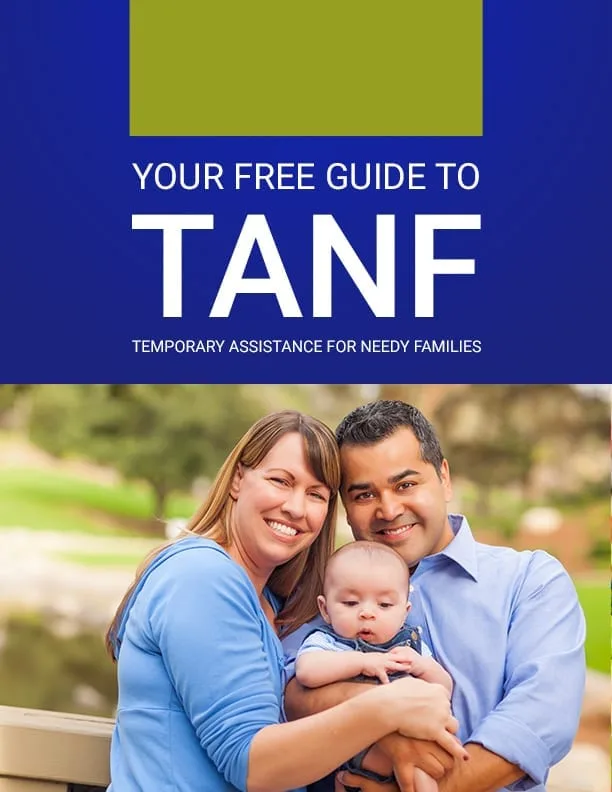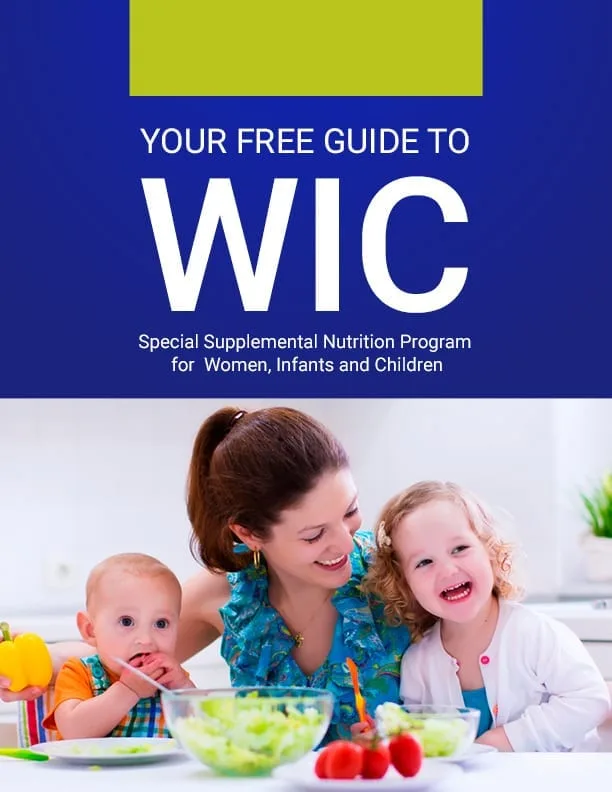Your Free Guide to the Lifeline Program
Your Free Guide to the Lifeline Program
We are privately owned and not affiliated with the government in any way or form.
Staying connected may not need to come with a high price tag. Whether you’re applying for jobs, keeping up with school, or checking in with loved ones, having access to a phone or internet plan can be essential—but it’s not always affordable for some folks. That’s where the Lifeline Program can help.
In this guide, we’ll break down what you should know about getting a free or discounted phone or phone plan through Lifeline. We’ll walk you through who usually qualifies, how it works, where to apply, and what to watch out for—no jargon, no fluff, just helpful info on this federal assistance program.
What is the Lifeline Program?
The Lifeline Program is a long-running federal assistance program that helps people with limited incomes pay for phone or internet service. It’s managed by the Federal Communications Commission (FCC) and is available in every U.S. state, territory, and Tribal land.
With Lifeline, eligible households can receive a monthly discount—up to $9.25—for phone, internet, or bundled services. If you live on Tribal lands, that discount can be even higher. Some providers operating through the program may also offer a basic smartphone at no cost, along with free talk, text, and limited data plans to those who qualify.
Lifeline exists to make sure that everyone has a way to stay connected, especially when money is tight.
Who Is Eligible for Lifeline?
To qualify for the Lifeline program based on income, your household must earn 135% or less of the Federal Poverty Guidelines. These limits are based on your household size and where you live.
Click here to view the most recent Federal Poverty Guidelines: https://aspe.hhs.gov/sites/default/files/documents/dd73d4f00d8a819d10b2fdb70d254f7b/detailed-guidelines-2025.pdf
Here’s a breakdown of the annual 2025 income limits:
| Household Size | Contiguous U.S. & D.C. | Alaska | Hawaii |
| 1 | $21,127.50 | $26,392.50 | $24,286.50 |
| 2 | $28,552.50 | $35,680.50 | $32,832.00 |
| 3 | $35,977.50 | $44,968.50 | $41,377.50 |
| 4 | $43,402.50 | $54,256.50 | $49,923.00 |
| 5 | $50,827.50 | $63,544.50 | $58,468.50 |
| 6 | $58,252.50 | $72,832.50 | $67,014.00 |
| 7 | $65,677.50 | 82,120.50 | $75,559.50 |
| 8 | $73,102.50 | 91,408.50 | $84,105.00 |
If your total gross household income is at or below these numbers, you may qualify for Lifeline.
Note: Only one Lifeline benefit is allowed per household, not per person. If someone in your home already has Lifeline, you won’t be able to apply again unless you’re considered a separate household.
Who can get automatic eligibility?
If you’re already enrolled in certain government programs, you may not need to worry about double checking income limits—some participants are automatically eligible for the Lifeline program based on their income.
Most people can automatically qualify if they or someone in their household is receiving benefits from any of the following:
- SNAP (Supplemental Nutrition Assistance Program)
- Medicaid
- Supplemental Security Income (SSI)
- Federal Public Housing Assistance (FPHA)
- Veterans Pension and Survivors Benefit
- Tribal-specific programs, including:
- Bureau of Indian Affairs General Assistance
- Tribally-Administered Temporary Assistance for Needy Families (TTANF)
- Food Distribution Program on Indian Reservations
- Head Start (if income-qualifying)
When you apply for Lifeline, you may need to show proof of your participation in one of these programs—but often, the system can verify this automatically. If your info can’t be verified immediately, you’ll get instructions on what to submit.
Benefits of the Lifeline Program
The Lifeline program gives a monthly discount on phone or internet service, sometimes both. The exact benefits you can receive vary depending on the specific provider and where you live—but here’s what many people can often get:
- Free monthly talk and text
- A set amount of mobile data
- Discounts on home internet (in some areas)
- A free or low-cost smartphone
Most eligible households receive a $9.25 monthly discount, but if you live on Tribal lands, you could qualify for up to $34.25 off per month. Some providers also offer bonus perks like hotspot access or unlimited texting, especially through Lifeline-supported wireless plans.
While Lifeline won’t cover the cost of a premium smartphone or unlimited data, it can give you the essentials—at little to no cost—to stay connected every day.
How to Apply for Lifeline
Applying for the Lifeline program is free, and you can do it online, by mail, or through a participating phone or internet company. Here’s how to get started online:
- Visit the National Verifier: Go to getinternet.gov and click “Apply.” This will take you to the National Verifier, the official tool for checking your eligibility.
- Fill out the application form: You’ll answer questions about your income, household size, or government benefit participation.
- Submit your documents: You may be asked to upload or mail in documents to prove your eligibility. These could include:
- A recent pay stub or tax return (for income-based applicants)
- A benefits letter or program approval notice (for program-based applicants)
- Proof of identity (like a driver’s license or government-issued ID)
- Proof of address (utility bill, lease, etc.)
- Choose a Lifeline provider: Once approved, you’ll need to pick a phone or internet company that offers Lifeline service in your area. Many will assist you in completing enrollment and send your device, if one is included.
If you prefer to apply for Lifeline by mail, you can contact Lifeline at 800-234-9473 or at LifelineSupport@usac.org to request an application mailed to you.
You may also contact a participating phone or internet provider directly to apply for Lifeline.
CA, TX, OR Residents: You must apply for Lifeline benefits through your state’s existing application process:
- California Lifeline: https://www.californialifeline.com/en
- Texas Lifeline: https://www.texaslifeline.org/
- Oregon Lifeline: https://www.oregon.gov/puc/pages/oregon-lifeline.aspx
Annual Recertification
Everyone enrolled in the Lifeline program must complete a recertification process once every 12 months to keep receiving benefits. This step confirms that they still qualify based on income or participation in an approved program.
You’ll get a notice when it’s time to recertify. If your eligibility can be confirmed automatically, you typically won’t need to take any action. If not, you may be asked to submit updated proof. Missing the deadline to recertify could result in losing any applicable Lifeline discount, so it’s a good idea to keep track of your renewal date.
Lifeline Providers: Where to Get a Free or Discounted Phone
Once you’re approved for the Lifeline program, you’ll need to choose a phone or internet company that offers Lifeline-supported plans in your area. Each provider has its own plans and benefits, so it’s worth comparing options.
Some offer free or discounted smartphones, while others allow you to bring your own device. Plan features—like data limits or hotspot access—can also vary.
Not all providers are available everywhere. To see what’s offered in your zip code, visit the Lifeline Provider Lookup Tool here: https://cnm.universalservice.org/
To use it, enter your zip code or your city and state. The results page will display all the providers participating in the Lifeline Program in your immediate area.
Here are some well-known Lifeline providers that operate in many states:
Assurance Wireless
Assurance Wireless offers free monthly data, unlimited texts, and monthly talk minutes at no cost through the Lifeline program. It also supports a bring-your-own-phone option, giving you more flexibility if you already have a compatible device. Coverage is available in most states, including both urban and rural areas.
Available in:
AL, AR, AZ, CA, CO, CT, DC, DE, FL, GA, IA, ID, IL, IN, KS, KY, LA, MA, MD, ME, MI, MN, MO, MS, MT, NC, ND, NE, NH, NJ, NM, NV, NY, OH, OK, OR, PA, RI, SC, SD, TN, TX, UT, VA, VT, WA, WI, WV, WY
AirTalk Wireless
AirTalk Wireless provides both free and discounted Lifeline plans, including free smartphones for eligible users or the option to bring your own device. Plans also come with free international calling, which is a standout feature for staying connected to family and friends abroad.
Available in:
AK, AR, AL, AZ, CA, CO, FL, GA, HI, IA, ID, IN, IL, KY, LA, MD, MI, MN, MO, MS, MT, NE, ND, OH, OK, PA, PR, RI, SC, TN, TX, UT, VT, VA, WA, WV, WI, WY, VI
SafeLink Wireless
With unlimited talk and text, 10GB of monthly data, and a 5GB hotspot allowance, SafeLink Wireless offers one of the more generous Lifeline plans. New customers who don’t already have Amazon Prime may also get three free months of Prime as a bonus perk.
Available in:
AL, AZ, AR, CA, CO, CT, DC, DE, FL, GA, HI, ID, IL, IN, IA, KS, KY, LA, ME, MD, MA, MI, MN, MS, MO, NV, NH, NJ, NM, NY, NC, ND, OH, OK, PA, PR, RI, SC, TN, TX, UT, VT, VA, WA, WV, WI, WY
StandUp Wireless
StandUp Wireless offers free monthly minutes, texting, and data through the Lifeline program. If you need more than what’s included, you can purchase extra talk or data to fit your needs without switching providers. It’s a flexible option for households with changing usage.
Available in:
AR, AZ, CA, CO, GA, HI, IA, ID, IN, KS, KY, LA, MA, MD, MI, MN, MO, MS, NE, NV, NY, OH, OK, PA, PR, RI, SC, TX, UT, WI, WV, CT, FL, IL, MT, NC, NH, NJ, NM, OR, TN, VA, WA, WY
TruConnect
TruConnect provides free unlimited talk and text, up to 6GB of monthly data, and international calling to select countries through its Lifeline plan. It’s a great choice for those who need a bit more data and want to stay in touch with loved ones outside the U.S.
Available in:
AL, AK, AZ, AR, CA, CO, FL, GA, HI, ID, IL, IN, IA, KS, KY, LA, MD, MA, MI, MN, MS, MO, MT, NE, NV, NJ, NY, ND, OH, OK, OR, PA, RI, SC, SD, TN, TX, UT, VT, VA, WA, WV, WI, WY, PR, VI
Access Wireless
Access Wireless offers free smartphones (device selection not available), or you can bring your own phone if you prefer. Plans include unlimited texts, free monthly minutes and data, and no activation fees. If you need more, you can purchase additional minutes or data anytime.
Available in:
AL, AR, AZ, CA, CO, CT, DE, DC, FL, GA, IL, IN, IA, KS, KY, LA, MD, MI, MN, MS, MO, NH, NV, NY, NC, OH, RI, SC, TN, TX, UT, VA, WA, WI, WV
American Assistance
American Assistance offers free unlimited minutes and texts, plus 4.5GB of 4G data each month through the Lifeline program. There are no annual contracts, so you can stay connected without worrying about long-term commitments or hidden fees.
Available in:
AZ, AR, CA, CO, FL, GA, HI, IL, IN, KY, MA, MD, MI, MN, NV, NJ, NY, OH, PA, PR, RI, SC, TN, TX, UT, VA, WV, WI
enTouch Wireless
enTouch Wireless provides unlimited talk and text, 4.5GB of free monthly data, and a free phone—all with no contracts or hidden fees. It’s a simple, no-cost Lifeline option that makes it easy to stay connected without surprises on your bill.
Available in:
AZ, AR, CA, CO, DC, GA, HI, ID, IN, IA, KS, KY, LA, MD, MI, MN, MS, MO, NE, NV, NY, ND, OH, OK, PA, PR, SC, SD, TN, TX, UT, VA, WA, WV, WI, WY
Life Wireless
Life Wireless offers a free phone, unlimited talk and text, and a monthly high-speed data allowance with nationwide coverage. After you use your high-speed data, slower speeds are still available until your plan renews. You can also bring your own phone, enjoy 5G access, and buy extra high-speed data if needed.
Available in:
AL, AK, AZ, AR, CA, CO, FL, GA, HI, ID, IL, IN, IA, KS, KY, LA, ME, MD, MA, MI, MN, MS, MO, NE, NV, NJ, NY, ND, OH, OK, PA, PR, RI, SC, TN, TX, UT, VT, VA, VI, WA, WV, WI
Tag Mobile
Tag Mobile offers free unlimited talk and text, international calling to over 200 countries and up to 15GB of high-speed data through its Lifeline plan. You can bring your own phone, buy more data if needed, or choose from discounted smartphones offered by the provider.
Available in:
AL, AZ, AR, CA, CO, FL, IA, KY, LA, ME, MD, MI, MN, MS, MO, NV, OK, PA, SC, WV, WI
Cintex Wireless
Cintex Wireless includes unlimited talk and text, international calling to 80+ countries, and 4.5GB of 5G data each month. You can get a free smartphone or bring your own, and loyalty rewards offer extra perks. Coverage is nationwide with no contracts or activation fees.
Available in:
All 50 states and the District of Columbia
Verizon
Verizon offers Lifeline discounts for both wireless and home services. Eligible customers may save on Verizon Wireless phone bills, home phone service, or Fios home internet, depending on where they live. Availability is limited to specific states and counties, and plan types vary by location.
Available in:
CT, DC, DE, MD, MA, NJ, NC, PA, RI, VA
Select counties in Iowa, New York, North Dakota, and Wisconsin (for Verizon Wireless)
T-Mobile
T-Mobile’s Lifeline plan costs $10 per month and includes unlimited calls and texts across the U.S., Canada, Mexico, and Puerto Rico. It also comes with 4.5GB of high-speed data. While it’s not free, it’s still a discounted option with broad coverage and international calling.
Available in:
All 50 states and Puerto Rico
UScellular
UScellular offers multiple Lifeline plans, including a standard non-Tribal option for $34.25/month that comes with unlimited talk and text and 20GB of data. Tribal Lifeline plans are also available in select areas. All plans include nationwide coverage with no long-term contracts.
Available in:
IA, IL, KS, ME, MO, NE, NH, NC, OK, OR, TN, VA, WA, WV, WI
Lifeline vs ACP: What’s the Difference, and Why ACP Ended
You may have heard of the Affordable Connectivity Program (ACP)—another federal benefit that helped low-income households stay connected. While Lifeline is still active, it’s important to know that ACP officially ended on June 1, 2024, due to a lack of funding from Congress.
Here’s how the two programs compare:
Lifeline provides discounts on monthly phone or internet service and sometimes includes a free basic phone.
ACP offered monthly savings on internet service (up to $30, or $75 on Tribal lands) and a one-time discount on a device like a laptop or tablet.
ACP allowed many families to stay online for work, school, healthcare, and more—but it’s no longer available. Some provider websites haven’t updated their info, so if you see an offer to apply for ACP, be cautious. It may be outdated or misleading.
While there’s no replacement yet, there’s still hope that Congress could bring back ACP or create something new. In the meantime, Lifeline remains an option that helps you stay connected at a reduced cost.
What to Watch Out For
While the Lifeline program is legitimate and helpful, there are a few things to be aware of so you don’t run into problems:
- Scams and fake websites: Some sites still advertise the ended ACP or pretend to offer Lifeline just to collect personal info. Only apply through trusted sources, such as getinternet.gov or an approved provider.
- One benefit per household: Lifeline is limited to one service per household, whether that’s a phone plan or internet.
- Annual recertification: You’ll need to confirm your eligibility once a year to keep your benefit. Missing the deadline could result in the loss of your service.
- Limited plan features: Lifeline plans usually include the basics—not unlimited high-speed data or top-of-the-line phones. Make sure the plan fits your needs before signing up.
- Changes in service: If you move or switch providers, you may need to re-enroll or go through another eligibility check.
Being informed helps you make the most of the program—without surprises.
Staying Connected Without Breaking the Bank
If you’re worried about affording a phone or internet plan, know this—you’re not alone, and help is available. The Lifeline program was created to ensure everyone has access to communication, connection, and opportunity.
Whether you qualify through income or a government program you already use, Lifeline can give you the tools to stay in touch with loved ones, apply for jobs, get healthcare, and more. It won’t solve everything, but it’s a step toward making life a little more manageable.









